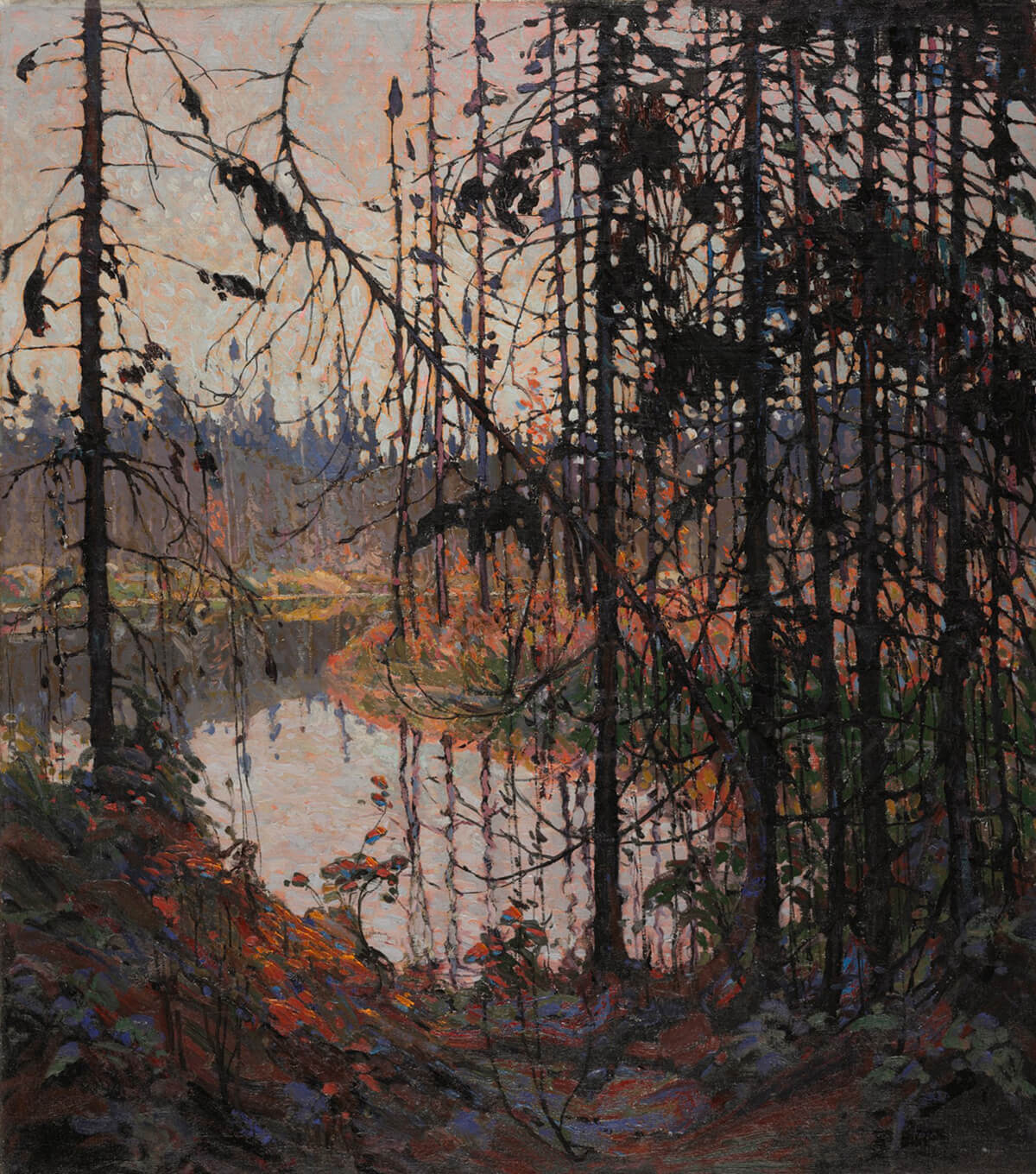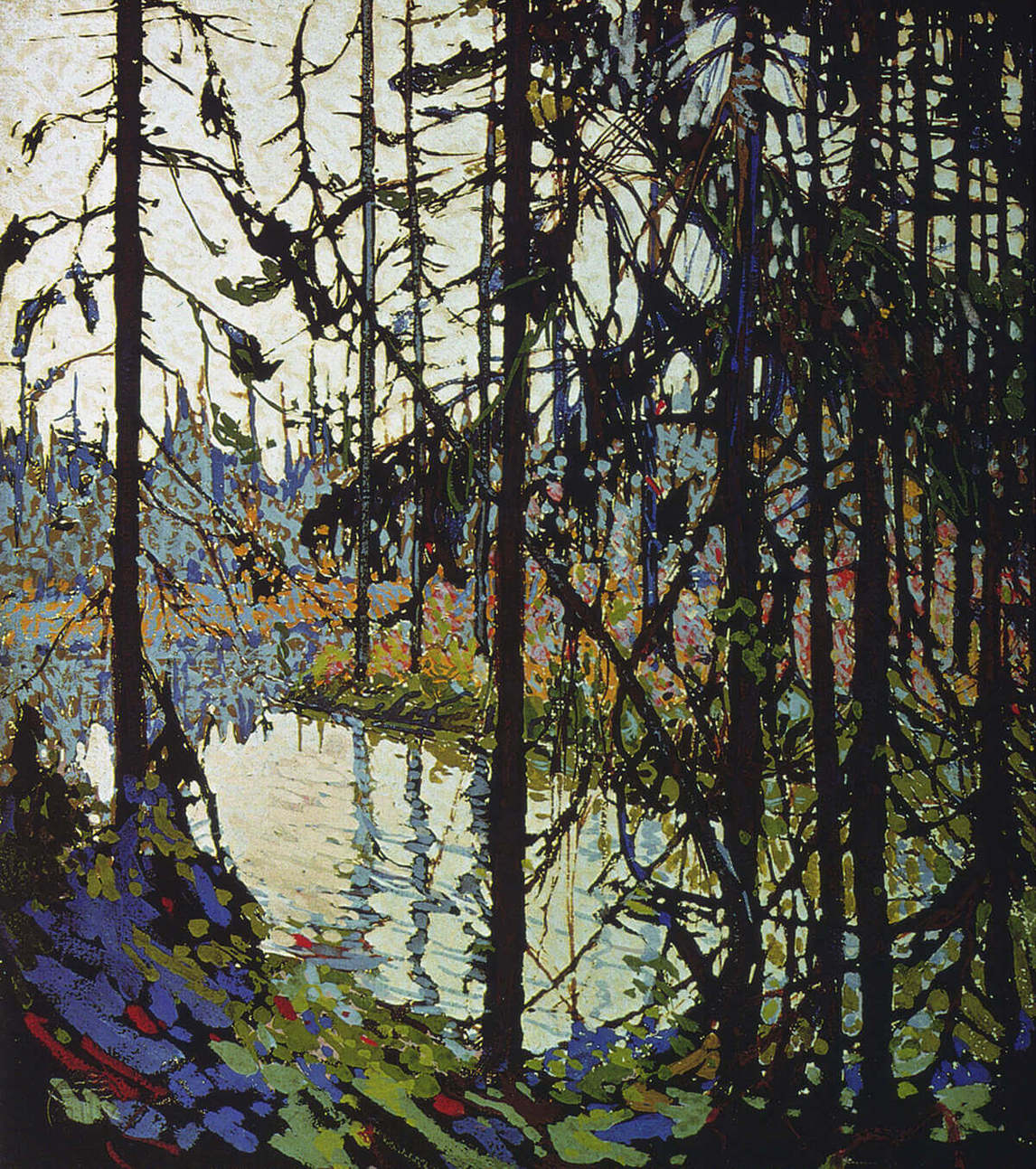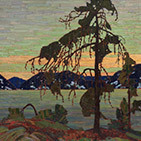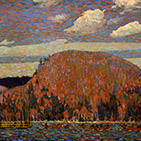Northern River 1914–15

Tom Thomson, Northern River, 1914–15
Oil on canvas, 115.1 x 102 cm
National Gallery of Canada, Ottawa
Writing to his friend and patron Dr. James MacCallum, Thomson referred to Northern River as his “swamp picture”—an amusing if self-deprecating label. As with so many of Thomson’s paintings, the subject is an ordinary one he might have found in almost any of the places he travelled. What he has done, however, is take a scene common to Algonquin Park and, with tense concentration, transform it into an extraordinary one. As viewers thread their way around and through the receding mesh of branches, they encounter an array of riches: a glimpse of the full autumn colours and their reflections on the river’s surface, or a line of sight through to the bend in the river or even to the hill in the distance on the right. The National Gallery of Canada, swayed by the painting’s distinct originality when it was exhibited in 1915, purchased it for $500.

With this painting, Thomson shows his ability to transform a sketch into a successful studio painting. The elaborate gouache study for this large image established the structure, but Thomson must have realized that the canvas needed a different, livelier treatment. Gouache on illustration board reflects more light than does oil on canvas, so for the painting Thomson transforms the study drastically. Behind the black scrim of tall trees, he keys up the colours of the foreground and the shore with reds, oranges, and yellows. The sky, which in the gouache blends more with the board, in the canvas is as convoluted and heavily textured as the rest of the painting.
Thomson’s recreation of the small sketch (a process also critical to the success of later paintings such as Opulent October, 1915–16, The Jack Pine, 1916–17, The West Wind, 1916–17, and several other canvases, including Pine Island, Georgian Bay, 1914–16, Burnt Land, 1915, and Spring Ice, 1915–16) was one of his artistic strengths—something that comes to the fore with this work. His friends in the future Group of Seven, in contrast, lost the intimacy and scale of their sketchs in the studio and always seem to have a degree of rigidity in the large canvases they painted from small oil sketches. Thomson was finally able to avoid this starchiness by finding within himself enough of the emotional fervour he had felt when he painted the sketch, or enough imagination to paint a new painting inspired by the sketch.
David Milne (1881–1953), a major Canadian painter and a shrewd critic, described the painting quite differently in a letter to Harry McCurry of the National Gallery in 1932: “Just plain impossible, but he has done it, it stirs you. Any painter who has ever worked on this overlying pattern motive will realize at once that this is tackling a complication beyond reason. A great point in Thomson’s favour this, and his lack of perfection. I am wary of craftsmanship. It is nothing in itself, neither emotion nor creation.” Then, referring to Thomson’s untimely death, he added, “I rather think it would have been wiser to have taken your ten most prominent Canadians and sunk them in Canoe Lake—and saved Tom Thomson.” Perhaps being “beyond reason” explains the bewitching quality of Northern River.

 About the Author
About the Author
 More Online Art Books
More Online Art Books
 Acknowledgements
Acknowledgements